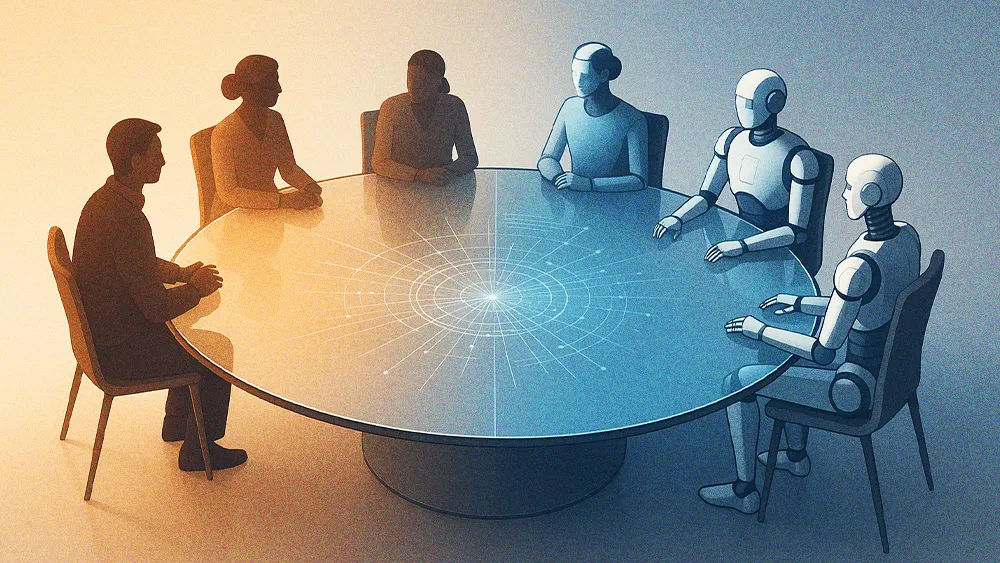
Key Points
- For most technology leaders, constant conflict and uncertainty are unavoidable parts of the job.
- Ken Knapton, the Chief Information Officer at WIN Brands, explained how his “disagree and commit” framework can help leaders turn this conflict into a tool for structured inclusion.
- The framework uses a data-driven process that forces teams to make decisions quickly, empowering them to solve problems rather than implement solutions.
For most CIOs, the job sits at a messy intersection of technology, risk, and transformation. With competing priorities, conflicting incentives, and incomplete data coming from every corner of the C-suite, conflict is almost constant. Today, the real question for leaders isn’t how to avoid it, but how to use it productively.
To get an expert's take on the subject, we spoke with Ken Knapton, Chief Information Officer at WIN Brands, where he's responsible for information and technology solutions for Costa Vida, Fresh Mexican Grill, and FatCats Entertainment. His almost 30-year career began at Intel, where Knapton was an architect of the antivirus solution acquired by Symantec and marketed as Norton Anti-Virus, Corporate Edition. Since then, he's served as a Chief Information Officer, Chief Technology Officer, and Chief Information Security Officer across the finance, healthcare, and retail sectors for companies like Merrick Bank and ContentWatch. In his experience, the most effective CISOs are the ones who can master conflict as a tool for structured inclusion.
"Leaders make decisions with between 40-60% of the data. So, if we wait until we have 100% of the data, then we've missed our window," Knapton said. Citing a lesson from Colin Powell, he explained how security leaders must act with conviction, even in the face of uncertainty. For him, the key to success is a philosophy called “disagree and commit.”
Listen first: Here, every voice has a space in the conversation before a decision is made, Knapton continued. "I don't want to taint the waters. I want people to express their opinion first. And that way, you move away from even the disagreement because they don't know they're disagreeing with you yet."
But managing downward with inclusion is different from managing sideways with peers, Knapton explained. When dealing with the executive team, his approach is about earning authority through proof, not politics. "I'm a data guy. And so I think it's important to leave opinions at the door and make sure that you're talking about data. 'This is why I'm proposing what I'm proposing, or this is why I'm disagreeing with what you're saying. Because here's the data that backs that up.'"

To prevent debate from spiraling into analysis paralysis, Knapton suggested a simple framework: Before a conversation even begins, everyone should know exactly what kind of decision is being made.
Choose your flavor: Here, he outlined four different types: authoritative (the decision is made), consultative (input is requested, but one person decides), democratic (a vote), and consensus (everyone must agree). In his experience, the consultative model provides the best balance of speed and inclusion for most business situations, Knapton said.
The real metric: Eventually, the process becomes the engine for a healthy culture. When an employee feels their voice wasn't valued, it signals a breakdown in the system. "Every time we come back to this thought that someone's voice hasn't been heard, to me, that means that we didn't do the disagree and commit process correctly. Because the whole point is, I'm going to hear you, I'm going to listen and understand your position, and then I will make the decision."
It all comes back to a core belief about what motivates technical professionals, Knapton concluded. Handing down a finished plan from on high might breed resentment and kill innovation. Present a challenge, however, and generate buy-in that leads to better outcomes. "IT people want problems to solve, not a solution to implement. As long as we are including the IT team in the problem and listening to what they're bringing to the table, then we're going to be much, much more efficient and much more effective."
.svg)




.webp)
